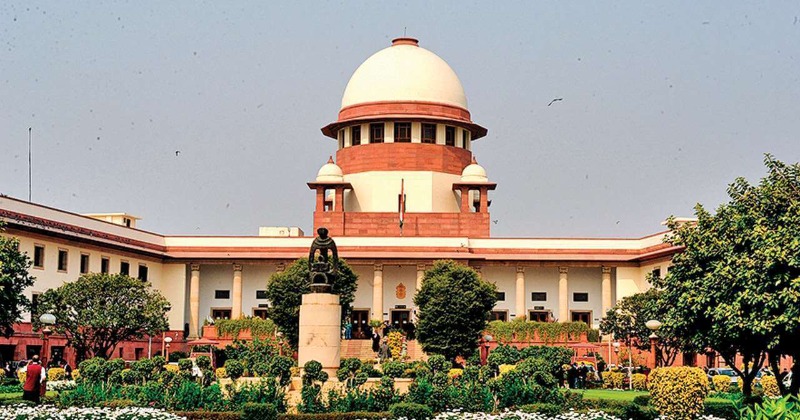Certain decisions, referenced by the opposing counsel, place restrictions on one’s ability to make arguments, making the entire case appear to be without merit. When one’s argument is refuted by the binding authority of a legal precedent established in accordance with Article 141 (the law declared by the Supreme Court shall be binding on all courts within the territory of India) of the Indian Constitution, what redress is available?

Unsplash/Representational Image
Well, there are two way-outs here, namely, per incuriam and sub-silentio. However, first we must know what a legal precedent actually means?
Jump To
![]()
Doctrine of precedent

Unsplash/Representational Image
Any judicial system’s structure places a high priority on the notion of precedent. It suggests that a judgement made by a court at the top of the judicial food chain binds courts below it. According to Article 141 of the Indian Constitution, all lower courts must abide by the Supreme Court’s interpretation of the law. Similar to this, a State’s High Court’s decision is binding on all Lower Courts within that state, and a division bench of a State High Court’s ruling is binding on the Justices sitting singly in that High court.
However, a per incuriam or sub-silentio decision is not technically enforceable as a precedent and may legitimately be overturned.
Per incuriam
In Latin, the phrase per incuriam implies “by carelessness.” In the case of Young v. Bristol Aeroplane Company, Lord Green M.R. extensively examined the theory of per incuriam as an exception to the doctrine of precedent. It was observed that, “The Court is not bound to follow a decision of its own if it is satisfied that the decision was given per incuriam, for example, where a statute or Rule having statutory effect which would have affected the decision was not brought to the attention of the earlier Court”.

Unsplash/Representational Image
Also in 2015, the Court in Hyder Consulting (UK) Ltd. v. State of Orissa held,
“A decision can be said to be given per incuriam when the court of record has acted in ignorance of any previous decision of its own, or a subordinate court has acted in ignorance of a decision of the court of record. As regards the judgments of this Court rendered per incuriam, it cannot be said that this Court has “declared the law” on a given subject-matter, if the relevant law was not duly considered by this Court in its decision.”
The Court most recently reiterated the significance of the doctrine of precedents as fundamental principles of the legal system in the case of Dr. Shah Faesal and Ors. v. Union of India and Anr., and stated that this per incuriam only applies on the ratio of the case.
Sub silentio
Sub silentio is a legal term that simply refers to a situation in which a court makes a ruling or applies a principle without taking into account the applicable law or any argument. The precedents that pass sub silentio are of “little or no authority,” according to Black’s Law Dictionary. Its literal meaning is “in silence,” and it’s used to describe something which is not explicitly stated.

Unsplash/Representational Image
Professor P.J. Fitzgerald, editor of the Salmond on Jurisprudence, explained it with an elaborate example. The court may consciously decide in favour of one party because of point A, which it considers and pronounces upon. It may be shown, however, that logically the court should not have decided in favour of the particular party unless it also decided point B in his favour, but point B was not argued or considered by the court. In such circumstances, although point B was logically involved in the facts and although the case had a specific outcome, the decision is not an authority on Point B. Point B is said to pass sub silentio.
The Apex Court’s ruling in Municipal Corporation of Delhi v. Gurnam Kaur, whereby the bench carefully considered the relevant English sources, decided that precedents sub-silentio and without argument are of no consequence. It is the most authoritative statement on the principle of sub silentio in India.
Over the years, many advocates have exploited this exception as a defence to get over obstacles in hearings and trials. It’s interesting to note that the Indian judiciary has occasionally allowed interpretations of the idea while maintaining an open mind about it.
Conclusion

Unsplash/Representational Image
Therefore the conclusion that can be drawn from these cases is that a court decision only extends its binding value when it directly addresses, discusses, and weighs a question. Any decision that is made explicitly falls under the scope; any references made in an indirect manner are not included.
The fundamental goal of per incuriam and sub-silentio exclusions is to strike a balance between judicial restraint and uniformity while preserving the freedom to correct decisions that are demonstrably incorrect. A judgement passed sub-silentio is essentially one passed “without consideration/without discussion” on a specific legal point, which ought to have been considered/discussed for the decision, as opposed to a judgement passed per incuriam, which is essentially one passed in clear violation of a law, rule, or judgement of a superior court/larger bench.

